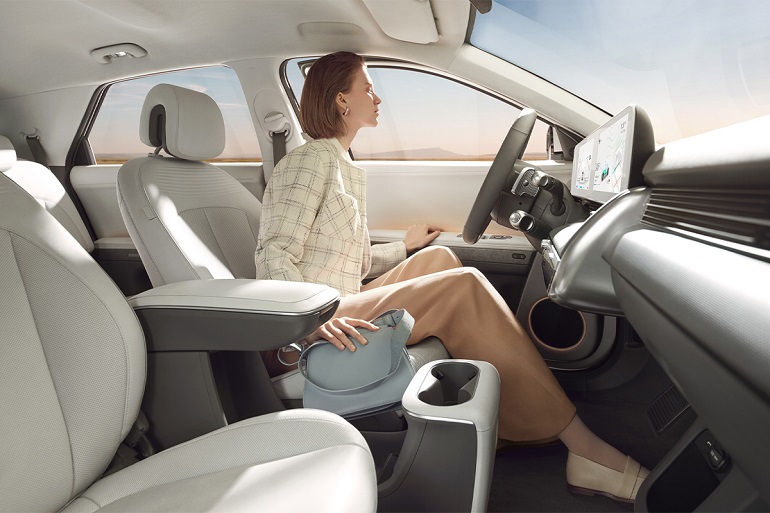The South Korean brand recently took the wraps off its new all-electric model, the Ioniq 5, which has the potential to shake-up the EV market that has, until now, been largely restricted to premium models with high price tags.
But that’s not the only reason the Ioniq 5 could have a big impact on the market when it arrives in the second half of 2021…
Hyundai is leading the way
While Toyota is the undisputed ‘king of hybrids’ in Australia, no mainstream car brand has stepped up in a similar way on EVs – until now. With the Ioniq 5, Hyundai has the opportunity to lead the way into the new era of electric motoring in this country.
Until now, the market has been dominated by the top end of the market – Tesla, Audi, Mercedes-Benz and Jaguar— but Hyundai and Nissan have tried to offer more affordable models. But while the likes of the Hyundai Ioniq sedan and Nissan Leaf have been more affordable, they have also been a step behind the premium brands in terms of technology.
That’s not the case with the Ioniq 5, with it offering the latest and most advanced batteries and electric motors packaged up in a bespoke EV model that also happens to be an SUV, catering to the market demand. If Hyundai can price, position and market the Ioniq 5 well, then it has the potential to bring a lot of new customers to EVs.
Carmakers have struggled for the past decade to find the right style for electrified cars, often caught between making a statement (BMW i3) or not making enough of a splash (Hyundai Ioniq). With the Ioniq 5, Hyundai appears to have found a good balance between contemporary styling that simultaneously fits within the current Hyundai range, whilst still being a unique model of its own.
Being based on the bespoke E-GMP platform, Hyundai has been able to maximise the advantages of not having an internal-combustion engine – something both the Ioniq and Kona Electric had to manage.
The Ioniq 5 measures 4635mm long but has a wheelbase of 3000mm, not only longer than the similarly sized Tucson, but also the Santa Fe and even the Palisade SUV. That makes for a mid-size SUV on the outside with the spaciousness of a larger model.

It also means an almost flat floor, without a transmission tunnel, that allows for a more flexible interior. One of the key selling points of the new machine is the Universal Island, a centre console with cupholders, USB inputs and a wireless smartphone charger, that can slide between the front and rear seats.
Speaking of the seats, Hyundai claims they can recline to provide the “optimum angle” for a “weightless feeling” as part of a holistic redesign of the interior.
Latest and greatest technology
As mentioned, the Ioniq 5 shares elements with the new Porsche Taycan super sedan. What precisely? Unfortunately for Hyundai, it’s not outright performance (although the Ioniq 5 is rapid, as we’ll delve into shortly), but it is electrical hardware.
Hyundai’s details of the top-of-the-range powertrain (the dual motor, AWD with 72.6kWh battery) make impressive reading; 225kW of power and 605Nm of torque. That’s enough, the company says, to launch the mid-size crossover from zero to 100km/h in just 5.2 seconds.
Even the entry-level specification (single motor, RWD, 58kWh battery) are a solid 125kW/350Nm, so all models should perform well on the road.
Hyundai hasn’t given any details on range for the 58kWh battery yet, but has said the 72.6kWh version is good for more than 470km of driving between visits to the charger.

